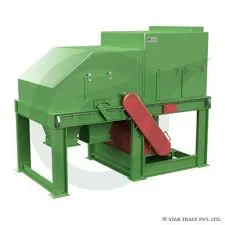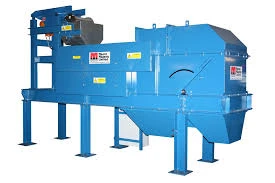Eddy current aluminum separation has emerged as a game-changing technology in the resource recycling industry, focusing on the efficient separation of aluminum from waste streams. This method has become increasingly popular due to its non-contact, high-speed separation capabilities, which are crucial for maximizing the value extraction from recycled materials. The technology harnesses the principles of electromagnetic induction, offering industries a robust solution for aluminum recovery.

In recent years, the recycling industry has faced significant challenges. The demand for aluminum, a highly recyclable and valuable metal, has skyrocketed across various sectors including automotive, aerospace, and packaging. This demand necessitates advancements in recycling techniques to ensure a sustainable supply chain. Traditional separation methods, while effective to an extent, often struggle with purity levels and efficiency, particularly when dealing with complex waste streams. It is within this context that eddy current aluminum separation plays a pivotal role.
From an expertise standpoint,
understanding the physics behind eddy current separation is essential. This method employs powerful rotating magnets to create local eddy currents in conductive metals like aluminum. When these eddy currents interact with the magnetic field, they generate opposing magnetic fields that repel the conductive metal, enabling its separation from non-metallic waste. This technology not only improves the purity of aluminum extracted but also enhances the overall process efficiency by significantly minimizing the presence of contaminants.

A closer look at practical applications reveals that many recycling facilities have successfully integrated eddy current separators into their operations. For instance, a leading recycling plant in Europe reported a 30% increase in aluminum recovery rates after implementing this technology. This improvement translates to both financial benefits and environmental sustainability, as more recycled aluminum reduces the need for primary aluminum production, which is resource-intensive and environmentally taxing.
eddy current aluminum separation
From an authoritative perspective, numerous industry bodies and research institutions have endorsed eddy current separation technology. Reports from the European Recycling Industries’ Confederation and the Institute of Scrap Recycling Industries highlight its effectiveness. Moreover, recent studies published in the Journal of Cleaner Production underscore the technology's ability to meet the high standards required for secondary aluminum production, bolstering its position as a preferred method in the recycling sector.
Credibility in the implementation of eddy current aluminum separation is also enhanced by ongoing innovations. Manufacturers of separation equipment continually refine their designs to better cater to industry demands. Recent advancements include the development of multi-frequency eddy current separators, which cater to a wider range of particle sizes and material types. This adaptability ensures that businesses can achieve optimal separation efficiency, regardless of the complexity of their waste stream.
For businesses looking to adopt eddy current aluminum separation, it is crucial to consider quality control and maintenance procedures. Ensuring that the equipment operates at peak efficiency involves regular calibration and inspection of the magnetic rotors and conveyors. Moreover, selecting a reputable equipment manufacturer that offers robust after-sales support can enhance trust and reliability in the system’s performance.
In conclusion, the adoption of eddy current aluminum separation technology marks a significant step forward for the recycling industry. Its ability to efficiently separate aluminum from complex waste streams not only improves the economic viability of recycling operations but also contributes to global sustainability efforts. As demand for recycled aluminum continues to grow, this technology will undoubtedly play a crucial role in meeting industry needs while promoting resource conservation. As such, businesses are encouraged to consider this technology not merely as an operational tool but as a strategic asset that enhances both environmental and financial outcomes. Continuing advancements and broader industry endorsements further position eddy current aluminum separation as a cornerstone technology in modern recycling processes.


